I didn’t expect cottage cheese flatbread to become a staple in my kitchen, but here we are—and honestly, I’m not looking back. This easy, protein-packed recipe is my go-to when I want something that feels like bread but keeps things light and nourishing. Whether I’m using it as a wrap, a quick pizza base, or just warm from the pan with a swipe of hummus, this cottage cheese flatbread always delivers.
What makes it so special? It’s naturally gluten-free, flourless, and made with real, wholesome ingredients—no yeast, no fuss. The magic is in the cottage cheese itself, giving the flatbread structure, softness, and that perfect chew. If you haven’t tried cottage cheese flatbread yet, trust me—it’s a total game changer for anyone who loves bread but wants a smarter, more satisfying option.
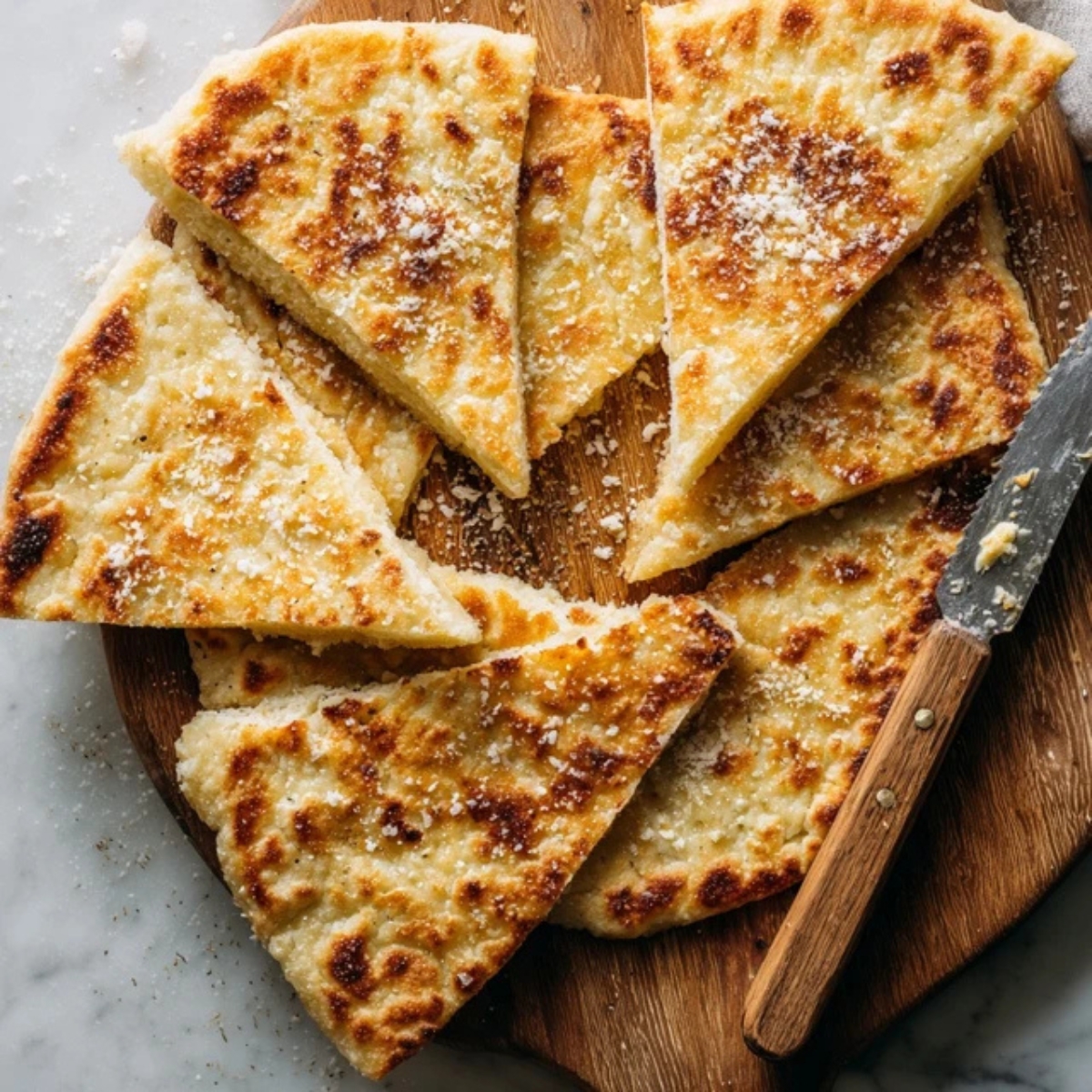
Why This Cottage Cheese Flatbread Recipe Is Taking Over Social Media
Cottage cheese flatbread quickly earned its spot in my weekly meal prep—and honestly, I get why it went viral. Like so many of you, I’m always looking for wholesome swaps that don’t skimp on flavor, especially when it comes to bread. This cottage cheese flatbread is a total win: it’s high in protein (about 15–20 grams per serving!), super simple to make, and doesn’t leave me feeling weighed down like traditional flatbreads sometimes do.
What I love most is how versatile it is—I use cottage cheese flatbread as a pizza base, a wrap, or even just torn warm with olive oil and herbs. Whether you’re eating low-carb, keto, or just trying to get more protein in your day, cottage cheese flatbread is one of those recipes that’s both smart and seriously satisfying.
Jump to:
- Ingredients
- Instructions
- Health Benefits and Nutritional Advantages
- Creative Variations and Flavor Combinations
- Essential Equipment for Best Results
- Storage and Meal Prep Solutions
- The Little Secret That Changed My Cottage Cheese Flatbread Forever
- FAQ
- Why Cottage Cheese Flatbread Deserves a Spot in Your Weekly Rotation
- Related
- Pairing
- Cottage Cheese Flatbread Recipe
Ingredients
Main Ingredients:
- Cottage cheese (full-fat or low-fat work equally well)
- Eggs (or 4 egg whites for a lighter version)
- Almond flour (or oat flour for a different texture)
- Garlic powder
- Dried herbs (oregano, basil, or Italian seasoning)
- Salt
- Black pepper
- Olive oil (for greasing the pan)
Optional Add-ins:
- Grated Parmesan cheese (for extra flavor)
- Onion powder
- Paprika (for a smoky taste)
- Fresh herbs like chives or parsley (finely chopped)
Substitution Options: The beauty of this cottage cheese flatbread recipe lies in its adaptability. If you're following a strict keto diet, stick with almond flour. For those who can tolerate oats, oat flour creates a slightly different texture that some people prefer. Greek yogurt can substitute for cottage cheese if needed, though the protein content will be slightly lower.
For egg-free versions, try using a flax egg (1 tablespoon ground flaxseed mixed with 3 tablespoons water, let sit for 5 minutes). The texture will be different, but it still creates a delicious flatbread.
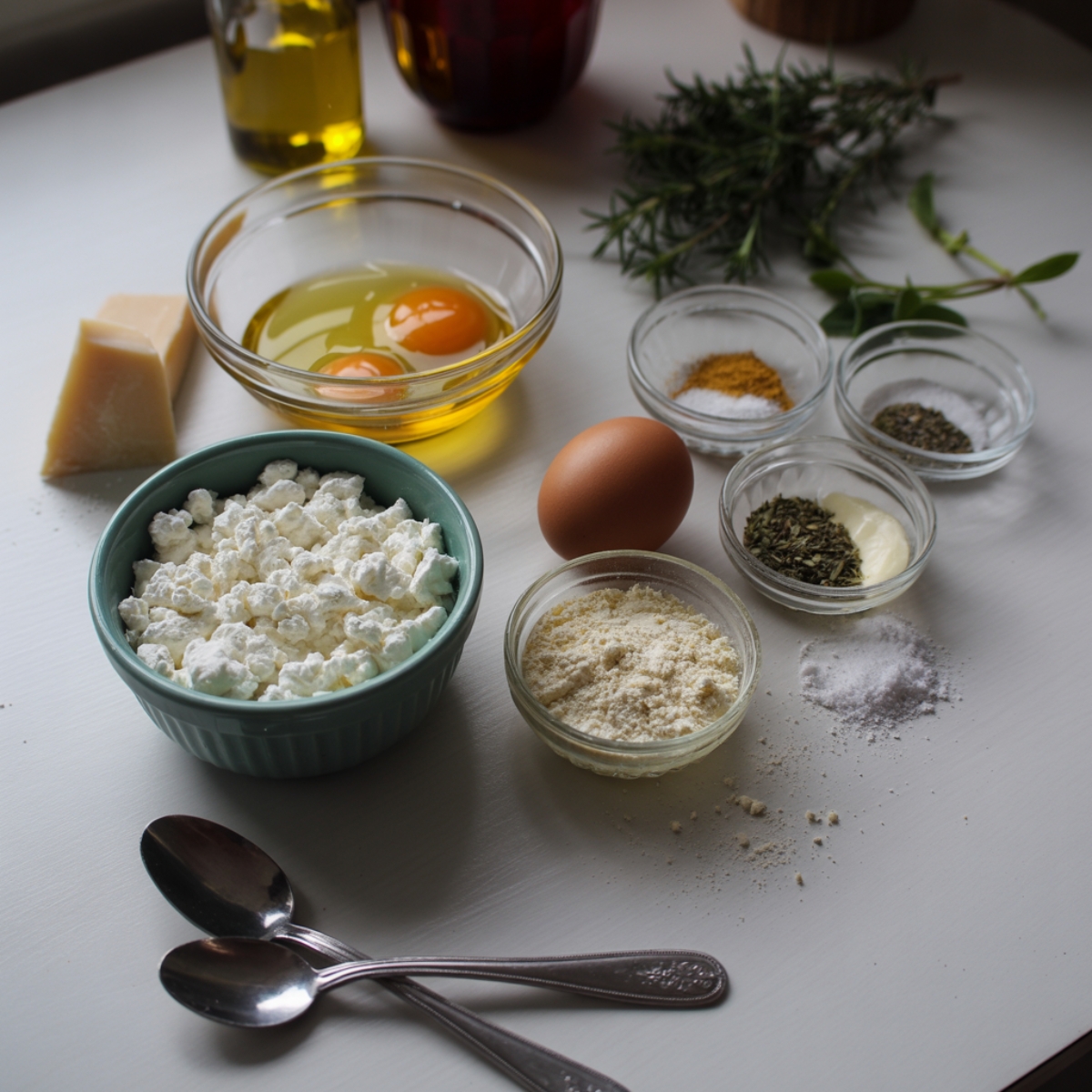
See recipe card for quantities.
Instructions
Prepare and Blend Your Base
- Preheat your oven to 375°F (190°C) and line a baking sheet with parchment paper. If you prefer to cook on the stovetop, have a large non-stick skillet ready instead.
- Gather all your ingredients and measure them out. Having everything ready makes the process much smoother, especially since this batter comes together quickly.
- In a food processor or high-speed blender, combine the cottage cheese and eggs. Blend until the mixture is completely smooth and creamy, with no lumps remaining.
- If you don't have a food processor, you can use a regular blender or even mash the cottage cheese thoroughly with a fork before whisking in the eggs. The key is getting the mixture as smooth as possible.
Create the Perfect Batter
- Add the almond flour, garlic powder, herbs, salt, and pepper to the cottage cheese mixture. Pulse or stir until just combined.
- The batter should be thick but pourable, similar to pancake batter consistency. If it seems too wet, add an extra tablespoon of almond flour.
- Don't overmix at this stage – a few small lumps are fine and will disappear during cooking. Overmixing can make the flatbread tough rather than tender.
- Let the batter rest for 5 minutes to allow the almond flour to fully hydrate and the ingredients to meld together.
Cook Your Flatbread (Choose Your Method)
Oven Method:
- Pour the batter onto your prepared baking sheet and spread it into a rectangle about ¼ inch thick.
- You can make it thicker if you prefer a more substantial flatbread, but keep in mind that cooking time will increase.
- Bake for 15-18 minutes, or until the edges are golden brown and the center feels set when lightly touched.
- The surface should have a slight golden color and feel firm to the touch.
Stovetop Method:
- Heat a large non-stick skillet over medium-low heat and brush with olive oil.
- Pour the batter into the pan and spread it evenly. Cover and cook for 8-10 minutes until the bottom is golden and the top is mostly set.
- Carefully flip the flatbread (it helps to slide it onto a plate first, then invert back into the pan).
- Cook for another 3-5 minutes until both sides are golden brown.
Cool and Serve
- Let the flatbread cool for 2-3 minutes before cutting. This brief cooling period helps it hold together better when sliced.
- Cut into wedges, squares, or strips depending on how you plan to serve it.
- Serve immediately while warm, or store for later use following the storage guidelines below.
- For best results, avoid cutting too soon as the flatbread continues to set slightly as it cools.
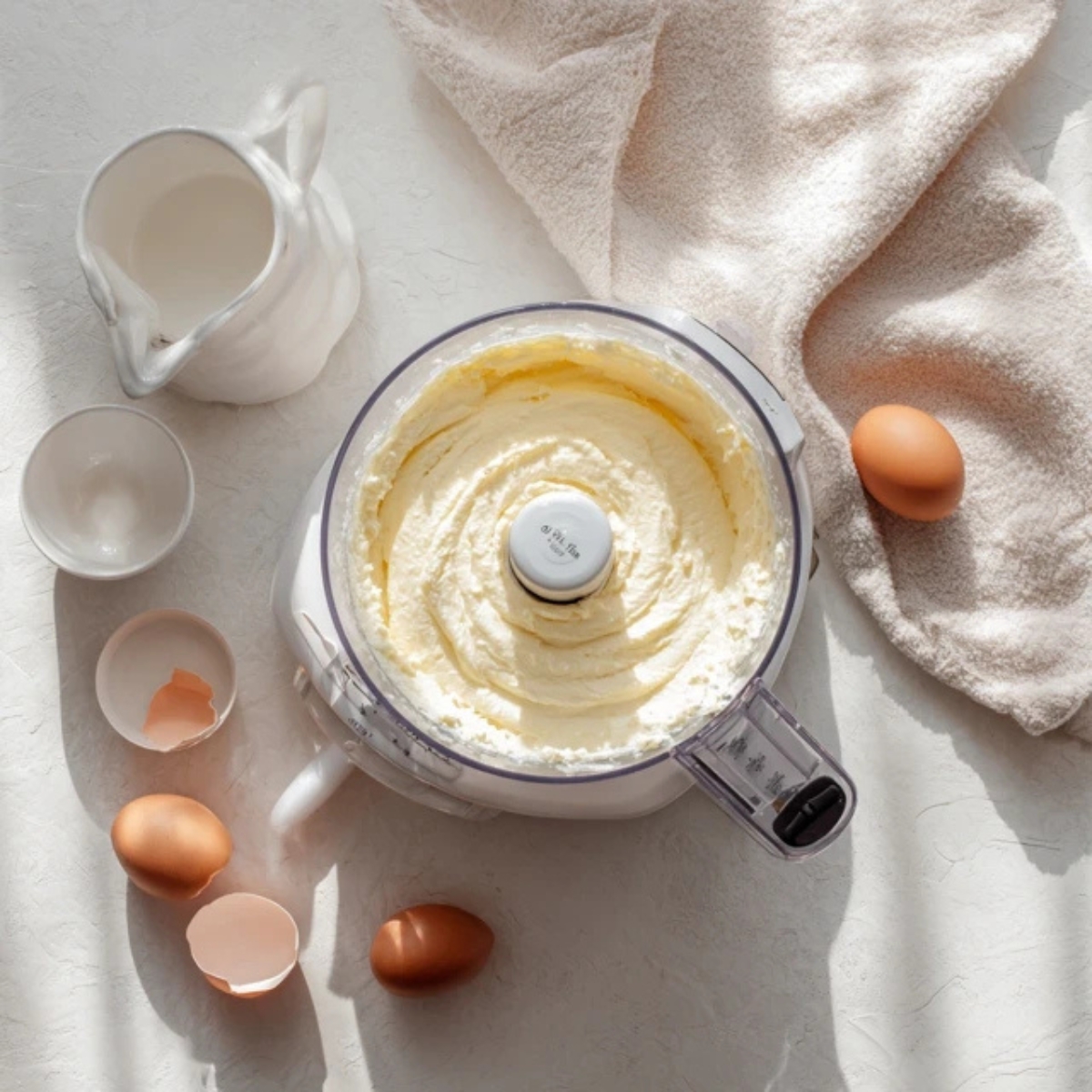
- Step 1: Prepare and Blend Your Base
Blend cottage cheese and eggs until smooth.
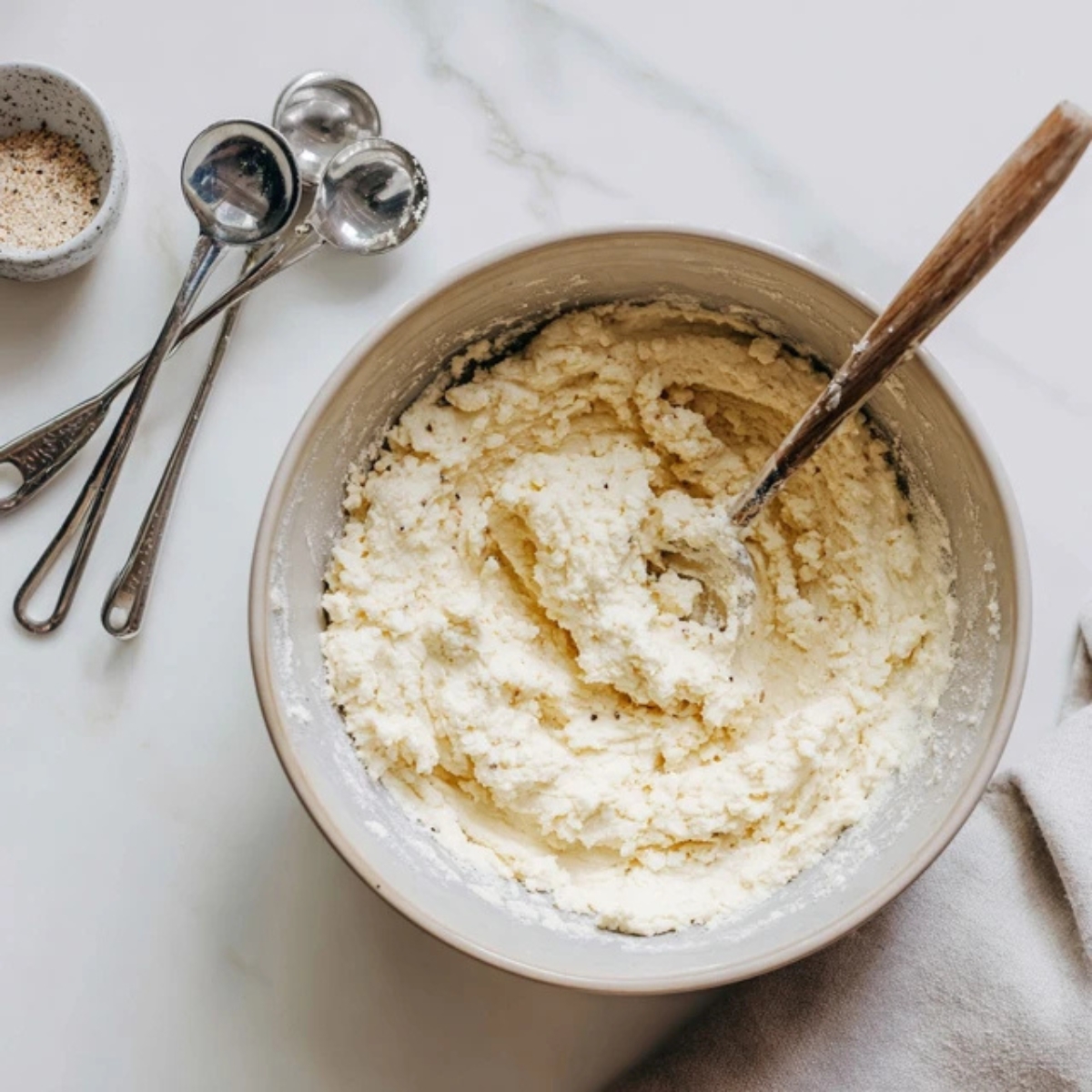
- Step 2: Create the Perfect Batter
Mix in almond flour and seasonings to form batter.
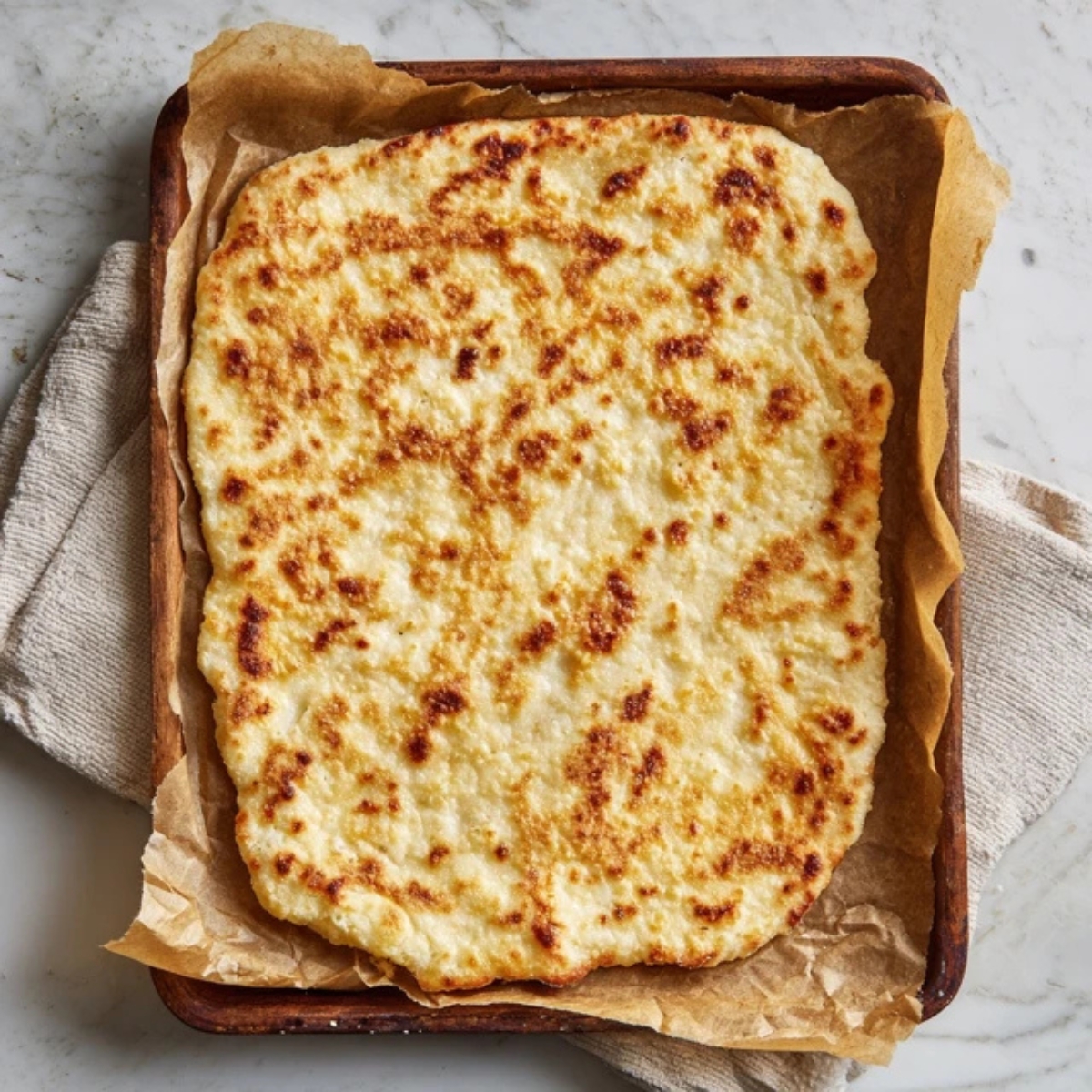
- Step 3: Cook Your Flatbread (Choose Your Method)
Spread batter and bake until golden.
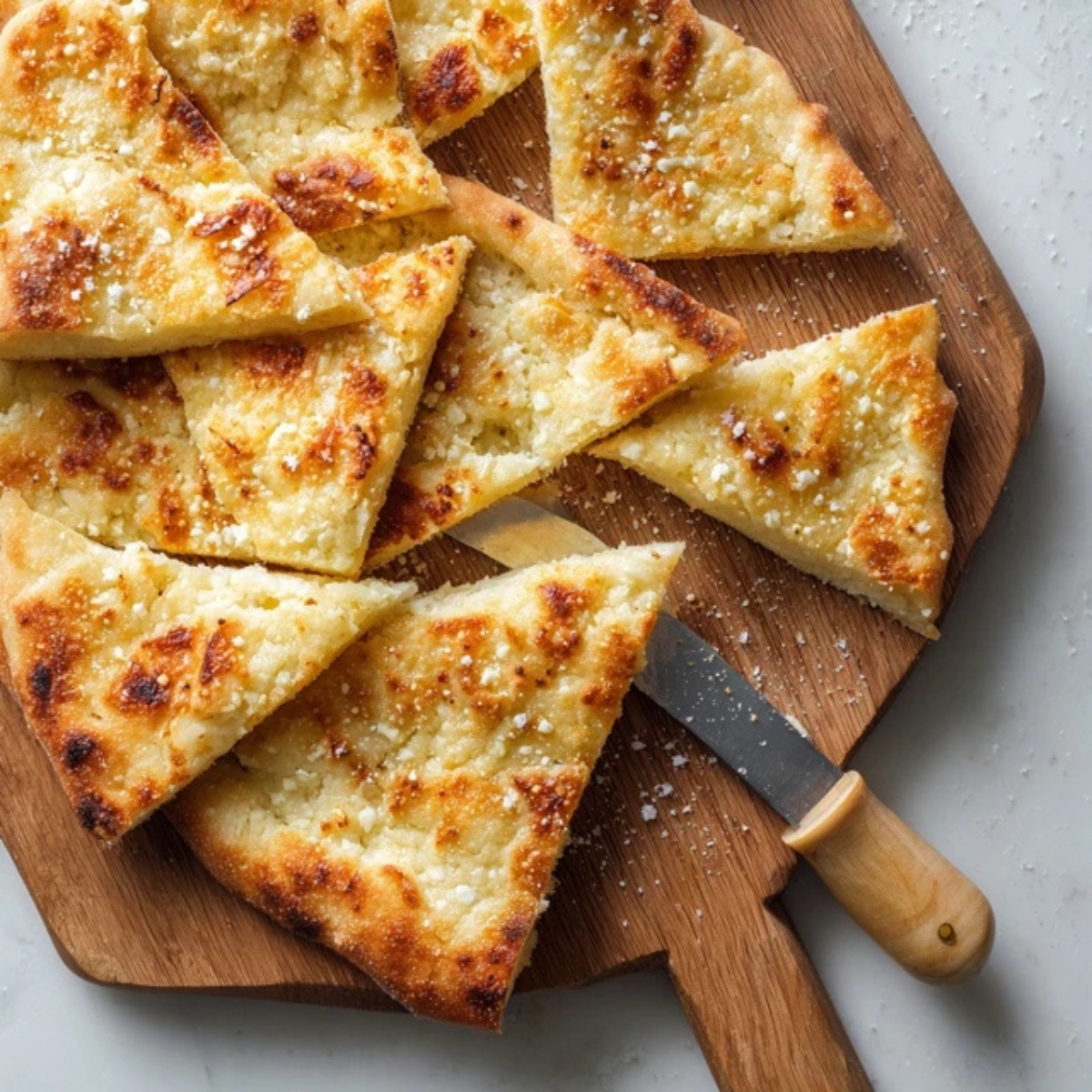
- Step 4: Cool and Serve
Let flatbread cool and cut into pieces.
Essential Hints and Tips for Success
The most important tip for perfect cottage cheese flatbread is getting the moisture content right. If your batter seems too wet, add an extra tablespoon of almond flour. If it's too thick, add a splash of milk or water.
Temperature control is crucial, especially for the stovetop method. Keep the heat at medium-low to prevent burning the outside while the inside remains raw. Patience is key – rushing the cooking process often leads to unevenly cooked flatbread.
For the smoothest texture, make sure your cottage cheese is at room temperature before blending. Cold cottage cheese doesn't blend as easily and can result in a lumpy final product.
Health Benefits and Nutritional Advantages
This cottage cheese flatbread recipe is a nutritional powerhouse. Each serving provides approximately 15-20 grams of complete protein, containing all essential amino acids your body needs. This makes it an excellent choice for muscle building, weight management, and overall health.
The high protein content helps keep you feeling full and satisfied, making it perfect for those trying to manage their weight or reduce overall calorie intake. Unlike traditional bread, this version won't cause blood sugar spikes, making it suitable for diabetics and those following low-glycemic diets.
Cottage cheese is also rich in calcium, supporting bone health, and contains probiotics that benefit digestive health. The addition of eggs provides additional protein, healthy fats, and important nutrients like choline, which supports brain function.
Creative Variations and Flavor Combinations
Cottage Cheese Flatbread Pizza Base
Transform your flatbread into a pizza by adding your favorite toppings after the initial bake. Spread marinara sauce, sprinkle with mozzarella cheese, and add vegetables or lean proteins. Return to the oven for 5-7 minutes until the cheese melts.
Mediterranean Style
Mix in sun-dried tomatoes, fresh basil, and a pinch of oregano to the batter. Serve with hummus, olives, and fresh vegetables for a Mediterranean-inspired meal.
Sweet Version
Reduce the herbs and garlic powder, and add a tablespoon of honey or maple syrup to the batter. This creates a slightly sweet flatbread perfect for breakfast, topped with fresh berries and a drizzle of nut butter.
Spicy Kick
Add a pinch of cayenne pepper, paprika, and some finely chopped jalapeños to create a spicy version that pairs beautifully with avocado and tomatoes.
Essential Equipment for Best Results
While you can make this cottage cheese flatbread with basic kitchen equipment, certain tools make the process easier and improve results. A food processor or high-speed blender is ideal for creating the smoothest cottage cheese base, though a regular blender works in a pinch.
A good non-stick skillet is essential for the stovetop method, as it prevents sticking and allows for easier flipping. If you prefer the oven method, invest in quality parchment paper or a silicone baking mat for easy removal.
A thin, flexible spatula helps with flipping and transferring the flatbread, especially when using the stovetop method. For even cooking, consider using a cast-iron skillet, which distributes heat more evenly than regular pans.
Storage and Meal Prep Solutions
Properly stored cottage cheese flatbread stays fresh for up to 4 days in the refrigerator. Wrap individual pieces in plastic wrap or store in an airtight container with parchment paper between layers to prevent sticking.
For longer storage, these flatbreads freeze beautifully for up to 2 months. Wrap each piece individually in plastic wrap, then place in a freezer bag. Thaw overnight in the refrigerator before reheating.
To reheat, place in a dry skillet over medium heat for 1-2 minutes per side, or warm in a 350°F oven for 3-4 minutes. Avoid microwaving, as it can make the texture rubbery.
This recipe is perfect for meal prep. Make a batch on Sunday and use throughout the week for quick lunches, wraps, or snacks. They reheat well and maintain their texture when properly stored.
The Little Secret That Changed My Cottage Cheese Flatbread Forever
I still remember the first time my cottage cheese flatbread turned out… off. The texture was too wet, the edges never crisped—and I was frustrated. I almost gave up on the recipe altogether, but my stubborn kitchen heart wouldn’t let me. That’s when I discovered the secret that changed everything: weighing the cottage cheese instead of scooping it. It turns out that not all cottage cheese is created equal—some are creamier, some are drier, and that tiny difference makes a big impact.
Once I started using 225 grams exactly, everything clicked. And here’s another gem I learned along the way: give the batter five quiet minutes to rest. It sounds small, but that pause lets the almond flour soak and settle, giving your cottage cheese flatbread the perfect texture every time. These little tweaks made my recipe reliable, delicious, and something I truly trust—and now I get to pass that secret on to you.
FAQ
Why does my cottage cheese flatbread fall apart all the time?
Cottage cheese flatbread may fall apart if the batter is too wet or undercooked. Make sure to weigh your cottage cheese (225g) and allow the batter to rest for 5 minutes. This helps the almond flour hydrate and bind the ingredients. Also, avoid flipping or slicing too soon—let it cool slightly to set properly.
How to make cottage cheese flatbread?
To make cottage cheese flatbread, blend cottage cheese and eggs until smooth. Stir in almond flour, herbs, and seasoning to form a thick batter. Let it rest, then cook on a non-stick skillet or bake in the oven until golden. It’s a quick, protein-rich, gluten-free flatbread that works beautifully as a wrap or pizza base.
Does cottage cheese melt when you bake it?
Cottage cheese doesn't melt like mozzarella, but it softens and blends well into baked dishes. In recipes like flatbread, it breaks down during baking to create a smooth, protein-rich base. The result is a tender texture that holds together beautifully—perfect for low-carb and high-protein recipes without the need for traditional flour or yeast.
What does cottage cheese mix well with?
Cottage cheese pairs well with both sweet and savory ingredients. It mixes beautifully with herbs, eggs, and almond flour in savory bakes like flatbread. For sweet options, combine it with berries, honey, or granola. Its mild flavor and creamy texture make it a versatile base for dips, spreads, pancakes, or protein-packed snacks.
Why Cottage Cheese Flatbread Deserves a Spot in Your Weekly Rotation
Cottage cheese flatbread isn’t just a passing trend—it’s a smart, nourishing staple that fits beautifully into everyday life. With its creamy texture, incredible protein boost, and endless versatility, it’s a recipe that earns its place in your kitchen again and again. Whether you're swapping it for traditional wraps, using it as a pizza base, or enjoying it fresh off the skillet, this cottage cheese flatbread makes healthy eating feel truly satisfying. And if you love wholesome, crowd-pleasing bakes, don’t miss our Cinnamon Donut Bread for a cozy treat or this fruity Strawberry Rhubarb Bread that’s perfect for spring mornings. From sweet to savory, we’ve got your cravings covered—starting with this protein-packed favorite.
Related
Looking for other recipes like this? Try these:
Pairing
These are my favorite dishes to serve with this Cottage Cheese Flatbread recipe:

Cottage Cheese Flatbread Recipe
Equipment
- Food Processor or high-speed blender
- Non-stick skillet or baking sheet for oven
- Spatula for flipping and lifting
- Measuring cup/spoon for accurate ingredient prep
- Mixing bowl for combining ingredients
Ingredients
- 1 cup Cottage cheese full-fat or low-fat
- 2 Eggs or 4 egg whites
- 0.5 cup Almond flour or oat flour
- 0.5 teaspoon Garlic powder optional
- 0.5 teaspoon Dried herbs oregano, basil, or Italian seasoning
- 0.25 teaspoon Salt
- 0.25 teaspoon Black pepper
- 1 tablespoon Olive oil for greasing the pan
- 2 tablespoon Parmesan cheese optional, for flavor
- 0.25 teaspoon Onion powder optional
- 0.5 teaspoon Paprika optional, for smoky taste
- 2 tablespoon Fresh herbs optional, chives or parsley, chopped
Instructions
- Blend cottage cheese and eggs until smooth.
- Add all dry ingredients and mix to form a batter.
- Let the batter rest for 5 minutes.
- Spread batter onto parchment paper to shape flatbreads.
- Bake or cook in a skillet until golden brown and cooked through.
- Allow to cool slightly before slicing or serving.


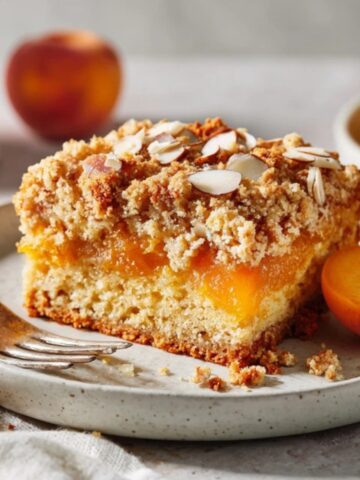

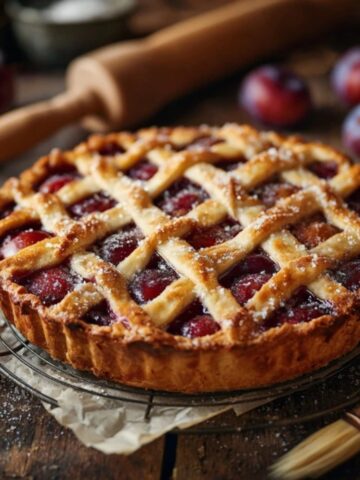
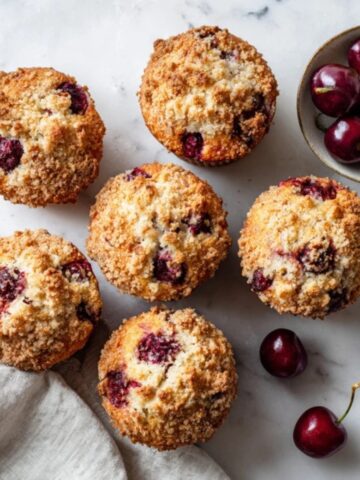
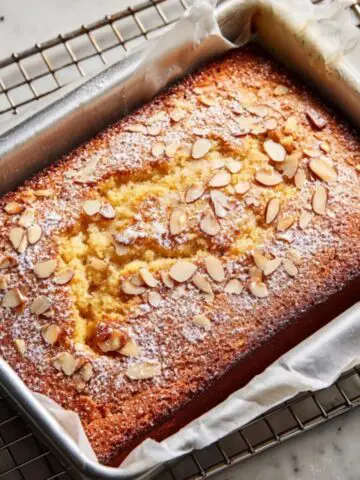
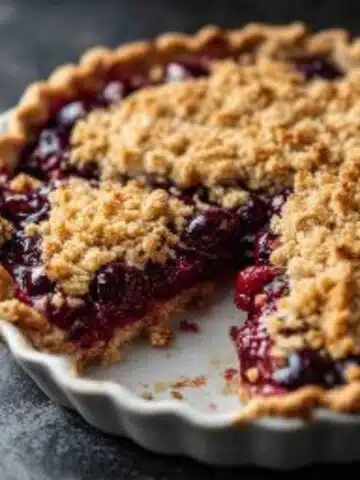
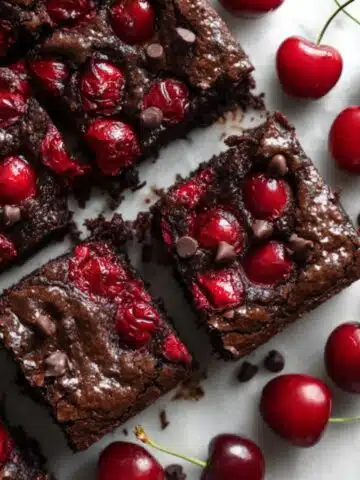

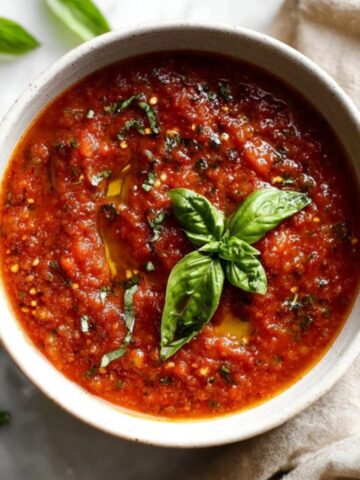

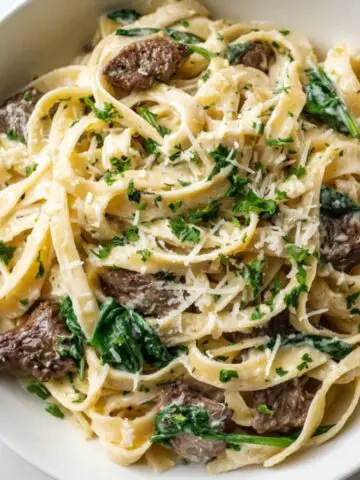
Leave a Reply